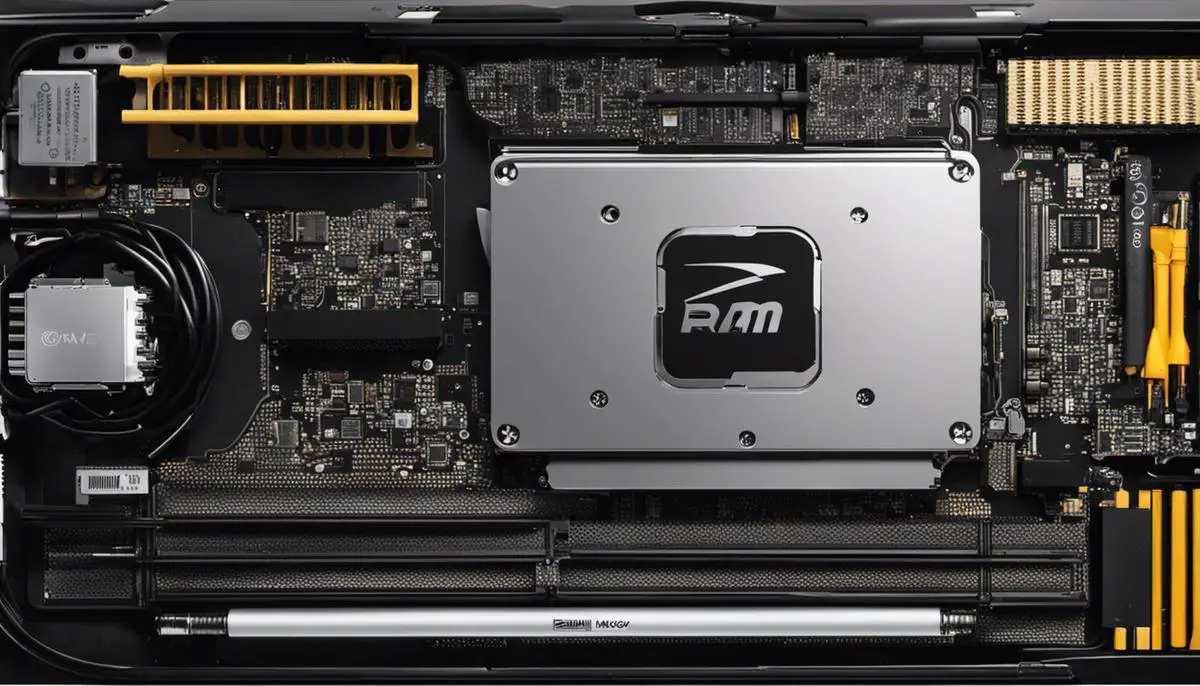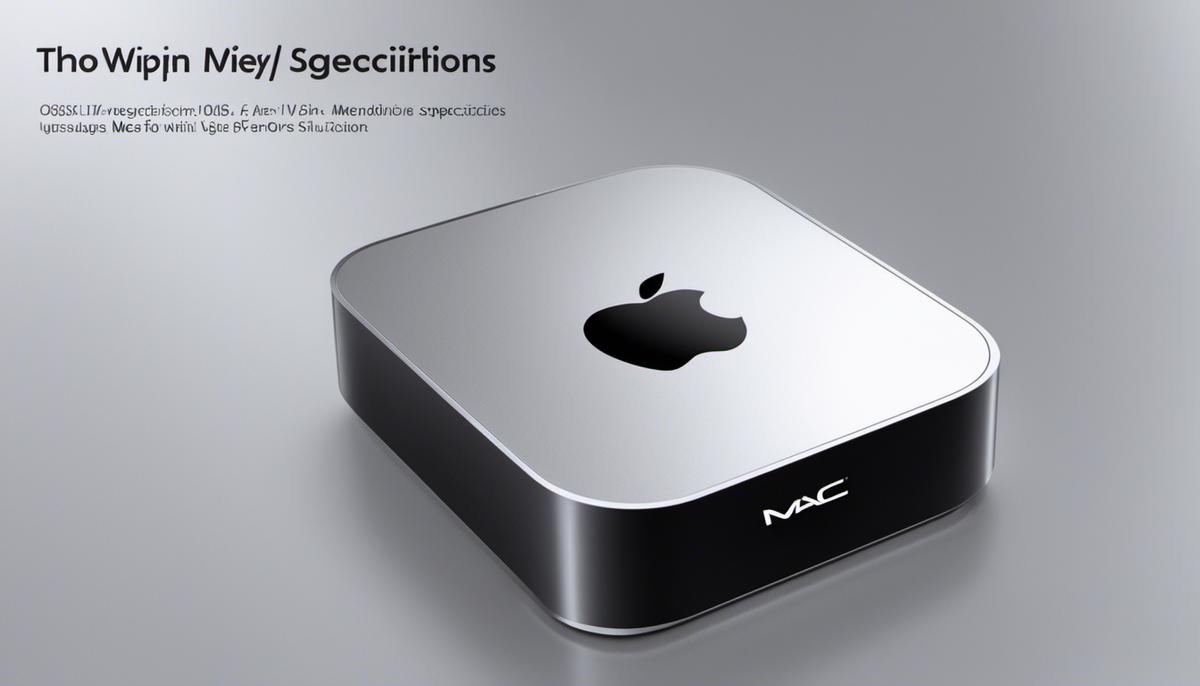Having a Mac Mini with low RAM can be frustrating, especially if you are a power user who needs to run multiple applications simultaneously.
Upgrading the RAM in your Mac Mini is an easy and cost-effective way to improve your computer’s performance.
In this DIY guide, we will walk you through the process of upgrading the RAM in your Mac Mini step-by-step, so you can do it yourself with ease. We will also cover the different Mac Mini models and specifications, and explore your RAM upgrade options.
Understanding Mac Mini Models and Specifications
Before you begin your RAM upgrade process, it is important to understand your Mac Mini’s model and specifications.
The Mac Mini has undergone several design changes over the years, so it is crucial to know which model you have.
- You can find this information by clicking on the Apple logo in the top left corner of your screen, then selecting “About This Mac.”
This will give you a detailed overview of your Mac Mini, including its model, processor, and RAM.
Here are a few popular models and their specifications:
- Mac Mini (M2, 2023): The M2 chip integrates the RAM, and therefore cannot be upgraded. It supports 16GB or 32GB of unified memory.
- Mac Mini (M1, 2020): This newer model features Apple’s own M1 chip. It supports 8GB or 16GB of unified memory and comes with 256GB, 512GB, 1TB, or 2TB SSD storage options. However, this model does not allow for RAM upgrades after purchase.
- Mac Mini (Late 2018): This model uses Intel Core i3, i5, or i7 processors. It supports up to 64GB of DDR4 memory and features 128GB, 256GB, 512GB, 1TB, or 2TB SSD storage options.
- Mac Mini (Late 2014): This model features Intel Core i5 or i7 processors, with memory options of 4GB, 8GB, or 16GB, and storage options of 500GB hard drive, 1TB hard drive, 1TB Fusion Drive, or 256GB, 512GB, or 1TB SSD. It’s important to note that this model does not support RAM upgrades after purchase.
- Mac Mini (Late 2012): This model uses Intel Core i5 or i7 processors. It supports up to 16GB of DDR3 memory and comes with 500GB or 1TB hard drive, or 256GB or 512GB SSD storage options.
Please note that the RAM in the Mac Mini models from late 2014 and onwards is soldered to the motherboard and therefore is not user-upgradable. You should be absolutely sure about the amount of RAM you need when purchasing these models.
Understanding Mac Mini RAM Upgrade Options
The type of RAM your machine needs varies between models. Before purchasing RAM, check your model’s specifications.
For example, the Mac Mini 2018 uses DDR4 SO-DIMM RAM, while the 2012 version uses DDR3 SO-DIMM RAM.
When upgrading your RAM, it’s also important to consider its speed in MHz. For instance, the 2018 and 2020 Mac Mini models support 2666MHz DDR4 memory whereas, the 2012 model supports 1600MHz DDR3 memory.
- An important aspect to consider before you attempt to upgrade your Mac Mini’s memory is whether it allows for RAM upgrades.
As mentioned above, models post-2014 have RAM soldered to the motherboard, making upgrading impossible. The last Mac Mini model to support user upgradeable memory is the 2018 model.
It’s, therefore, crucial to understand your Mac Mini’s model and specification before deciding on a memory upgrade.
Keep in mind that trying to add RAM to a Mac Mini that doesn’t support upgrades can harm the device, void your warranty, and potentially result in data loss. Always double-check your model’s specifications and consider professional assistance if you’re unsure.
See Also: Quick Fixes for a Macbook Not Charging
Hands-on RAM Upgrade Process
Now that you have a better understanding of your Mac Mini’s models, specifications, and RAM upgrade options, it is time to get hands-on.
Here is a step-by-step guide to upgrading your Mac Mini’s RAM:
Tools Needed
Before you start, gather all the necessary tools:
- Torx T6 and T8 screwdrivers
- A plastic spudger
- An antistatic wrist strap (optional, but recommended to prevent electrostatic discharge)
Opening The Mac:
First, shut down your Mac Mini and unplug all cables.
Flip the Mac Mini over and use your fingers or the plastic spudger to rotate the bottom cover counter-clockwise until it’s free.
Lift the cover to expose the internals.
Removing The Original Ram:
Locate the two RAM modules in the center of the Mac Mini.
Push the clips on each side of the RAM module outward to release the RAM from its slot.
Pull the RAM module straight out, and repeat the process with the second module if necessary.
Installing New Ram:
Hold your new RAM module at a 45-degree angle and insert it into the vacant slot.
Ensure that it’s inserted firmly and evenly. If you have a second RAM module, repeat the process in the second slot.
Once both modules are installed, push them both down simultaneously so that they lie flat, and the clips on the sides snap into place.
Closing The Mac Mini:
Before closing the Mac Mini, double-check your work to ensure that the RAM is properly seated.
Place the bottom cover on the Mac Mini and rotate it clockwise until it’s secure.
Final Steps
Finally, connect all of your cables back to the Mac Mini. When you turn on your Mac Mini, it should automatically recognize the new RAM and adjust its settings accordingly.
If you’re having trouble, make sure that the RAM sticks are properly seated and the bottom panel is securely locked into place.

Post-Installation Recommendations:
After successfully upgrading your Mac Mini’s RAM, it is recommended to follow these additional steps:
- Perform a memory test: You can use a free memory testing program to check for any potential errors with your new RAM. This software runs multiple intensive tests on the memory that can detect any issues.
- Monitor your Mac Mini’s performance: Keep an eye on your Mac Mini’s performance after the RAM upgrade. You should experience increased speed and improved multitasking capabilities. If you notice any lagging or freezing, double-check to make sure the RAM has been installed correctly.
- Keep your Mac Mini’s software up to date: Ensuring your system’s software is updated is crucial. Each new update comes with enhancements that can improve your Mac Mini’s performance and help it use the new RAM more effectively.
- Regularly back up your data: An upgrade is a good time to start (or continue) a regular backup regimen. It’s an essential step to protect your data in case of any unforeseen issues in the future.
Remember, while a RAM upgrade can significantly improve your Mac Mini’s performance, it is only one aspect of maintaining an efficient system. Regular software updates, a steady backup routine, and consistent system checks will help maximize your RAM upgrade and overall system performance.
Related: Battery Not Charging Mac: What To Do
Frequently Asked Questions:
- Can I use any brand of RAM for my Mac Mini upgrade?
While there are many brands of RAM available, it’s crucial to ensure that the RAM you choose is compatible with your Mac Mini model. Check the specifications of the RAM, including the type (DDR3 or DDR4), speed, and capacity, before making a purchase.
- What do I do if my Mac Mini doesn’t recognize the new RAM?
If your Mac Mini doesn’t recognize the new RAM, try reseating the RAM modules to ensure they’re installed correctly. If the issue persists, it could be due to a faulty RAM module.
- Does upgrading the RAM void my Mac Mini’s warranty?
If your Mac Mini model allows user upgrades (like some older models do), upgrading the RAM should not void the warranty. However, any damage caused during the upgrade process may not be covered under warranty.
- How much RAM do I actually need?
The amount of RAM you need depends on your usage. For basic tasks like browsing and emailing, 8GB of RAM is sufficient. For resource-intensive tasks like gaming, video editing, or running virtual machines, you may require 16GB or more.
- Can I mix RAM of different sizes or speeds?
While it’s technically possible to mix RAM of different sizes or speeds, it’s generally not recommended. Your Mac Mini will perform best with matching RAM modules.
Conclusion:
Upgrading the RAM in your Mac Mini is a simple and cost-effective way to improve your computer’s performance. By understanding your Mac Mini’s models, specifications, and RAM upgrade options, you can choose the right RAM for your needs. By following the hands-on RAM upgrade process we provided, you can successfully upgrade your Mac Mini’s RAM by yourself. With the new RAM installed, your Mac Mini will be able to handle more applications and perform better overall.

J.S. is the owner, content creator, and editor at Upgrades-and-Options.com. I’ve worked in the IT and Computer Support field for over 20 years. The server hardware in my computer labs has mostly been IBM, but I’ve supported Dell, HP, and various other hardware. In addition, as part of my lab administrator responsibilities, I’ve learned, supported, and repaired/upgraded network hardware such as Cisco routers and switches. READ FULL BIO >>
- Upgrading SSD Storage in the ThinkPad X9-15 Gen 1 Aura Edition
- How Quantum Computing Could Impact Everyday Laptops
- What Is The Difference Between Lenovo’s Pens? (with Part Numbers)
- Legion 5 Laptop Upgrade Guide: Game Like a Pro
- How to Replace Your Laptop Battery: A Step-by-Step Guide
- IdeaPad Gaming 3 Upgrade (Full Specs)
- Shut Down a Lenovo Laptop: Quick and Easy
- Lenovo LOQ 15IRX9 RAM and SSD Upgrade


